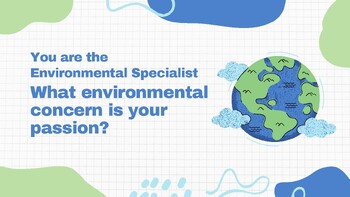Environmental Specialist Earth Day Project Presentation
- PDF
Description
I found as a librarian that I could teach many of the skills for safe research using reliable resources through a project that the students were passionate about the topic. They were so excited about their topic and the new information that they were finding about the topic and the concerns and struggles, and so consumed with brainstorming ideas for helping that they were learning about research without realizing it.
They learned that google is a search engine --not the be all end all of the research process. Good for a quick definition but not the only resource out there. They learned that Wikipedia can sometimes be reliable and sometimes not, but another great place to start and then compare information they found elsewhere.
I loved this project! I hope you do too!


